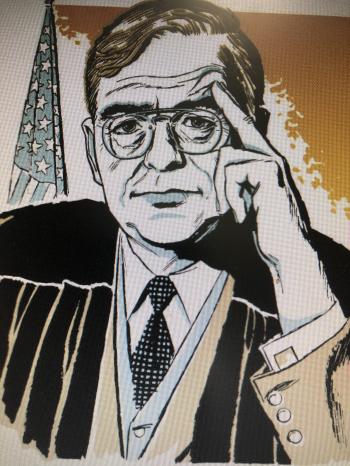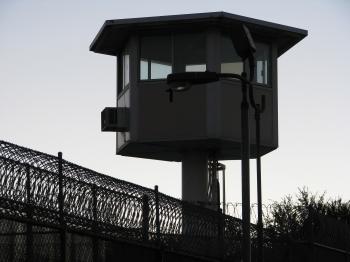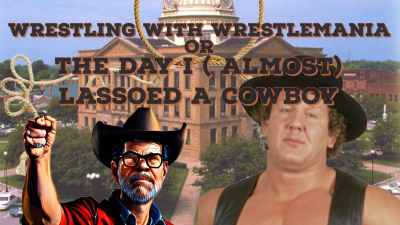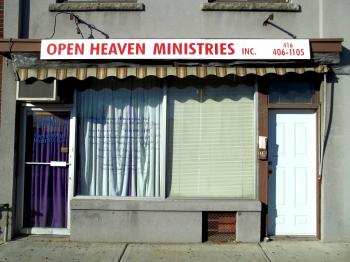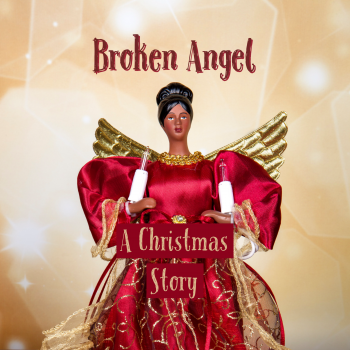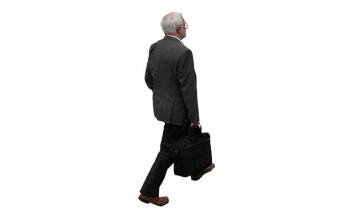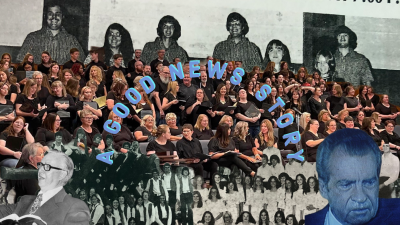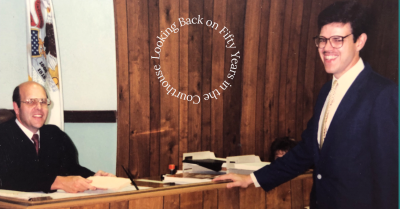Users Who Spiked

THE JESUS REVOLUTION, THE SIXTIES AND THE MEGACHURCH SCANDALS
Private Notes
Private Notes
Notes
The Jesus Revolution, The Sixties and the MegaChurch Scandals
This past weekend my wife and I took in the new film about the beginnings of the "Jesus People" movement in the late 1960s and early 1970s. I found The Jesus Revolution to be well made and thought provoking. Not a great film, but a very good one that exceeded the expectations I had for it . It made me think a good deal about the journey my own faith has taken over the course of the past half century.
I was never a "Jesus People" person. But the movement that started in Pastor Chuck Smith's Calvary Chapel and the beaches near Costa Mesa California produced waves of change in the evangelical church that eventually rippled through Central Illinois by the time I had graduated high school in 1977 and moved on to college at Eastern Illinois.
The best parts of the film are how it addresses the tensions that Chuck Smith introduced into his stodgy, traditional church when he told his daughter he wanted to meet a hippie. It seemed he couldn't believe people actually lived that way.
What he didn't count on was his daughter bringing one home. What happened next changed the way traditional Bible centered churches have worshiped and approached the culture they live in ever since.
The relationship between that Pastor and the longhaired, tie dyed, hippie street preacher Lonnie Frisbee is one of the centers of the film. The other is the story of Greg Laurie, the megachurch pastor and evangelistic crusade leader who wrote the book the film is based on.
The initial tension in the film is between Chuck Smith's evangelistic heart to reach the youth of the counterculture with the message of Jesus and the resistance that pushes against this from the suit and tie wearing middle class white folks that are already in the pews at his church.
I can remember how some of these tensions played out in my own youth. Lincoln was not a mecca for "hippies" or the counterculture. Still, I remember my Dad's disgust with the Lincoln College students he would see. Having hair over your ears and wearing blue jeans made you suspect. Anti-War protests, of which there were few on that campus, made you a candidate to be "lined up and shot" .(Note: My Dad didn't have a violent bone in his body. He was just grousing) Of particular concern was anybody that would dare to sew a flag patch on their jeans. You did not disrespect the flag in the Funk household and wearing it next to your butt was a sacrilege.
These sentiments were largely confirmed at the church. I remember my 7th grade Sunday School teacher telling us boys that wearing your hair long was offensive to God. (Apparently he hadn't seen the pictures of the longhaired Jesus on the walls!). Wearing your best clothes to church was a part of offering your best to God. That meant dress shirts and pants for boys and dresses for girls. Men came with a suit or sports jacket and a tie, women in dresses and high heels. We sat in hardwood pews with our faces to the front and sang out of a hymnbook that was 25-30 years old. The songs in them were mostly considerably older than that.The music was provided by an organ and a piano.
When I arrived at EIU and went to the Christian Campus House for the first time, I experienced something like culture shock. There were chairs but they were stacked in the corner and everybody sat on the floor. Worship was lead by a girl(!) who strummed an acoustic guitar. Everybody wore jeans and mostly t-shirts.. Most of the guys had hair over their ears. Nobody, including the campus minister, wore a suit and tie. The songs were choruses, some of which I'd heard in High School youth group but mostly new to me.
Then, at the end of the song service, one of the girls said, "Now were gonna teach you freshman how to dance the Hora!" Everyone proceeded to rise from the floor, gathered in circle, threw their arms around the backs of the person next to them and then slowly danced by kicking their legs like chorus girls.The circle moved around to the beat of the song, faster and faster as we sang "Praise you Jesus, son of God, your's is the blood of the Lamb, King of Kings and Lord of Lords, God of Abraham, Hallelujah, God of Abraham."
What was this sorcery? Dancing as a form of worship? Where did that come from? In Lincoln dancing was right up there with drinking and smoking and going out with girls that did on the list of things to avoid. EIU had obviously experienced the ripple effects of what was happening on the coast long before my hometown did.It was a traditional Jewish folk dance introduced to the group by a Messianic Jewish guy from Chicago, but to my rural routed mindset ,it was more than a little "out there."
Later, in conversations with Bob Ross, the campus minister who had started the ministry in 1970, I found out that in its beginnings the Campus House drew almost exclusively from students who had no church background, total newbies to the faith that were drawn to the person of Jesus and his promises of an abundant life. Bob described them as people searching for something authentic and true, something that would give their life meaning and purpose. And they found that in the simple, unadulterated relationship with Jesus and the community of His followers. A community who didn't make many demands on them beyond the expectation they would follow Jesus and try to live as He would want. The Campus House had its own Sunday services and Bible studies, so there was no pressure from those outside the campus to conform to the church behavior codes of the day. It was just us students, being what we thought God wanted from us.
Some of these folks were still there when I arrived in 1977. They didn't have much of a concept of what the traditional church was like with its cultural expectations that you would dress better, speak more politely and cast a wary eye on anyone who didn't look, think and act like what you believed a good Christian should be. I found it tremendously refreshing. To be able to "let your hair down" literally and figuratively, was a big relief. To be able to sing praise music that actually had something of a beat to it was even better!
The hippies out in California had emphasized being inclusive, letting each person express their own individuality in the way they wore their hair or their clothes and not judging them for their lifestyle. There was a good deal of this spirit in the Jesus movement as well. Judging people on the basis of wealth or class, race or status was definitely seen as anti-Jesus. Making the message available to all meant some walls that had gone up would have to come down. Suits and ties were symbols of wealth and class so they had to go. Three hundred year old hymns demonstrated that the church was out of touch, so they were replaced by the latest chorus or Christian rock anthem. Racial barriers that produced white churches and black churches had to come down.
LIke the counterculture that it arose from, the Jesus Revolution eventually was absorbed into the church culture By the time I graduated from EIU in 1981 most of the kids at the campus house had come from church backgrounds and knew how to speak "Christianese" long before they got to campus. Blue jeans and long hair were starting to be replaced by soft-perms and polyester pants. Izod shirts were as common as the rock and roll band tees that dominated fashion when I arrived on campus. There wasn't much enthusiasm for dancing the Hora.
But in the churches back home something started to happen. The Jesus people were graduating and taking the ideas about dropping the barriers to inclusivity back to their churches. Guitars and drums started to replace organs and pianos. Twentysomethings decided it was ok to wear something other than suits and dresses to church. Churches started to hire minority staff people and reach out to those who didn't identify as caucasian. There was a genuine attempt to reach out beyond what the church had become and include those that had previously been looked down upon as "unchristian."
In the film, a major point of tension erupts when Pastor Chuck and Lonnie Frisbee argue publicly over what approach Calvary Chapel would take over the public exercise of the supernatural gifts of the Spirit, i.e. faith healing. Lonnie was convinced God had called him to do this. Chuck not so much.
In real life, as reported in several sources, the divisions ran deeper than this. Lonnie had started his career as an evangelist while experimenting with psychedelic drugs and actually preached his first sermon and baptized his first converts while he was tripping. He had also been involved in same sex relationships since he was a young teenager and was still actively practicing that lifestyle while preaching at Calvary. That was not in keeping with Calvary's understanding of sexual ethics. The film reduces these conflicts down to a statement by Chuck that Lonnie needs to "watch your ego, young man."
Perhaps this wasn't the best way to highlight the tension between the two leaders. But, I wonder if its not a good way to demonstrate what's happened to the evangelical church since the Jesus Movement changed it.
The film brought to mind some thoughts about The Sixties. I'm not talking decade that
It was set in. I'm talking about a song by T-Bone Burnett, the semi-famous songwriter and music producer from his 1983 album Proof Through the Night. T-Bone had some connections to the Jesus Movement. While I don't think he specially had the Jesus People in mind when he wrote the song that I think is a brilliant social commentary on the decade , I can see some application to them coming from it. Bear with me through these lyrics, I think them quite profound:
There's a new breed of man, he's got a wife and some kids
He works behind a desk beside a computer
He watches a lot of television, belongs to a health club
Drinks things like Cutty and 7, whatever that is
He wears faded Levi's and Gucci loafers
His hair is long and perfectly groomed
He smokes the best marijuana
Wears a gold coke spoon in his pocket
And his speech is riddled with jargon like, "Far out"
"Do your own thing", "I hear you", "Into it"
"Blow my mind" and "Freak"
You know, "I'm a sports freak"
"I'm a jazz freak"
"I'm a video freak"
He hates accident
Never questions authority
Burnett paints a picture of the stereotypical "yuppie" of the 1980s, who is thoroughly committed to his own best interests. He has been freed from the rules of convention that existed before the 1960s by the counterculture , so now he wears faded Levis and Guccis and wears a gold coke spoon in his pocket, but unlike those that lead the way to a new attitude that allows him to do these things, he "works at a desk behind a computer" and he 'never questions authority." He loves to have it both ways. He's hip and cool, very much into whatever makes him feel good about himself, but won't question authority and is a slave to his job. Burnett continues in the chorus:
Politicians don't debate
They transcendental meditate
Stockbrokers aren't in by ten
They're all strung out on heroin
Baseball players aren't so square
They've got beards and stringy hair
Car dealers don't just sell drive trains
They sometimes also deal cocaine
He paints a picture of the hippie of the counterculture, fifteen years removed from his origins. Those who grew their hair long and shut down campuses with protests over Vietnam in 1968 were now the politicians, stockbrokers, baseball players, and car dealers.
But they've sold out, still pursuing their parents' ideal of the good life of material acquisition but adding a few goods and ideas their parents would have shunned. He wraps it all up in the song's outro:
Keep all the bad, hey
And destroy all the good
Keep all the bad, hey
And destroy all the good
Keep all the bad, destroy all the good
Keep all the bad, destroy all the good…
The point Burnett makes is not a subtle one, the counterculture of the sixties ended up selling its soul for a bowl of material goodies. All the revolutionary changes ended up only expanding the list of stuff to pursue in the quest for the good life
So what's this got to do with the third phrase of the title, "... the Megachurch scandals?" As I was thinking of the film I ran across a story in my twitter feed about another Megachurch scandal involving alleged pastoral sexual abuse. I nearly scrolled past it as these stories have become as ubiquitous as school shootings. But then the name of one of the churches caught my eye. I know these people! I have friends that go there. I grew up with that elder.
And I started to think about what I knew about Megachurches and how they related to the Jesus people movement. Many of the Jesus People ended up in the Megachurches. Like Calvary Chapel many Megachurches started with the sincere motive of trying to introduce people without church backgrounds to Jesus. We used to call that being "seeker-sensitive." To draw the unchurched, such churches try to lose the trappings of tradition. No suits and ties, no organs and pianos. Instead the pastor wears skinny jeans and tennis shoes and there's a full worship band playing choruses and Christian rock anthems. To make the seekers comfortable some downplay the more countercultural elements of worship. Communion might not take place in the main service and baptisms are at a separate time so as not to raise too many questions about these "odd" practices.
A new attitude prevailed too about people who had experienced what is now call "moral failure." In more traditional places, this is bluntly called sin. But part of the new inclusivity was seeing people as objects of God's grace, not his condemnation. So the divorced, the addicted, and others that might have felt shunned in Bible centered churches of the past were now reguarly the subject of outreach campaigns.
An effort of sorts to create a diversity of staffing is not usual. Several minority pastoral staff are added to the roster and women are included in the leadership on some level. In these and other ways the Megachurch might seem to be fulfilling the desires of those early Jesus People to be inclusive and welcoming.
Other aspects of the Jesus Revolution seem to be missing. In the film Calvary Chapel buys a rental property where the young people who have been left homeless due to their faith commitments can stay and receive food and shelter. Lonnie Frisbee would leave Calvary later and become the director of a communal shelter run by churches in Oregon that would house over a thousand people.
Critics of the Megachurch model claim its built around providing for the needs of the people in the pews. So programs to help the members be better parents, better spouses, better stewards of their money, and more physically fit are typically plentiful. Some commentators have described them as places where the implicit message seems to be Jesus will help you be a better you. And they have tended to draw people who come from a particular demographic- upperward mobile, white, suburban, conservative.
The results, say the critics, has been a kind of homogenized, pragmatic, community full of very similar people who have many of the same preconceived assumptions about those outside the church that their parents and grandparents did, except now they wear jeans to church and sing choruses instead of hymns.
The other major difference is that these churches are 10 times bigger than what was typical before the 1970s. Big numbers mean big budgets and big budgets mean big numbers have to be sustained to keep the money flowing. Any news that comes across as negative might compromise that cash flow and so there are at least ten times as many reasons as there were in the 70s to quash any negative news. In our social media world that's next to impossible.
So when a megachurch problem becomes public, it's usually magnified by attempts to cover it up. As was first said of the Watergate scandal, "the coverup is worse than the crime."
It seems to be that the Megachurch culture has never really recognized there is a tension between the desire to be inclusive and gracious to flawed people, which of course, is all of us, and the desire to maintain the facade that the church has no problems.
Lonnie Frisbee's personal struggles make an apt metaphor for this. He personified the good intention of opening the church to those that it had previously condemned. But he never apparently was able put aside some of the behaviors that were prevalent among the culture he was drawing people from. The warnings Chuck Smith gave him about his ego were warnings the church needed to hear about how in its desire to cast a wide net of loving inclusivity, it needed to have some boundaries when it came to who was leading it.
In the financial crisis that came to be known as the Great Recession of 2007-2008 when the government came to the rescue of numerous financial institutions that had net worths in the hundreds of billions of dollars, we were told this was because they were "too big to fail."
It seems many of the scandals that have shaken the evangelical world of late might be ascribed to similar attitudes about our large institutions. Apparently their leadership thinks they are too big to fail. As a result they do whatever it takes to keep the status quo intact, even if that means they must "Keep all the bad, throw out the good." So the new attitude towards moral failure for those in the pew is extended in spades to those on the staff. If God can forgive the guy in the pew who is abusive, then why not extend the same grace to the pastor?
The problem of course is that there are victims of this abuse that the new attitude of graciousness tends to overlook. Lonnie Frisbee certainly could be forgiven for his drug abuse and sexual adventures, but how did that affect the people he was preaching to on Sundays who knew about what he did on Saturday night?
Lonnie died of AIDS when he was 43. Apparently he never resolved the conflict between his desire to share the Good News of Jesus and his physical passions. Perhaps his story, when told in full, might serve as a reminder of the need of the church to hold its leaders to a higher standard of accountability even while it extended the boundless, free grace of God to all who would accept it. We cannot continue to Keep all the Bad, Throw out the Good.





















